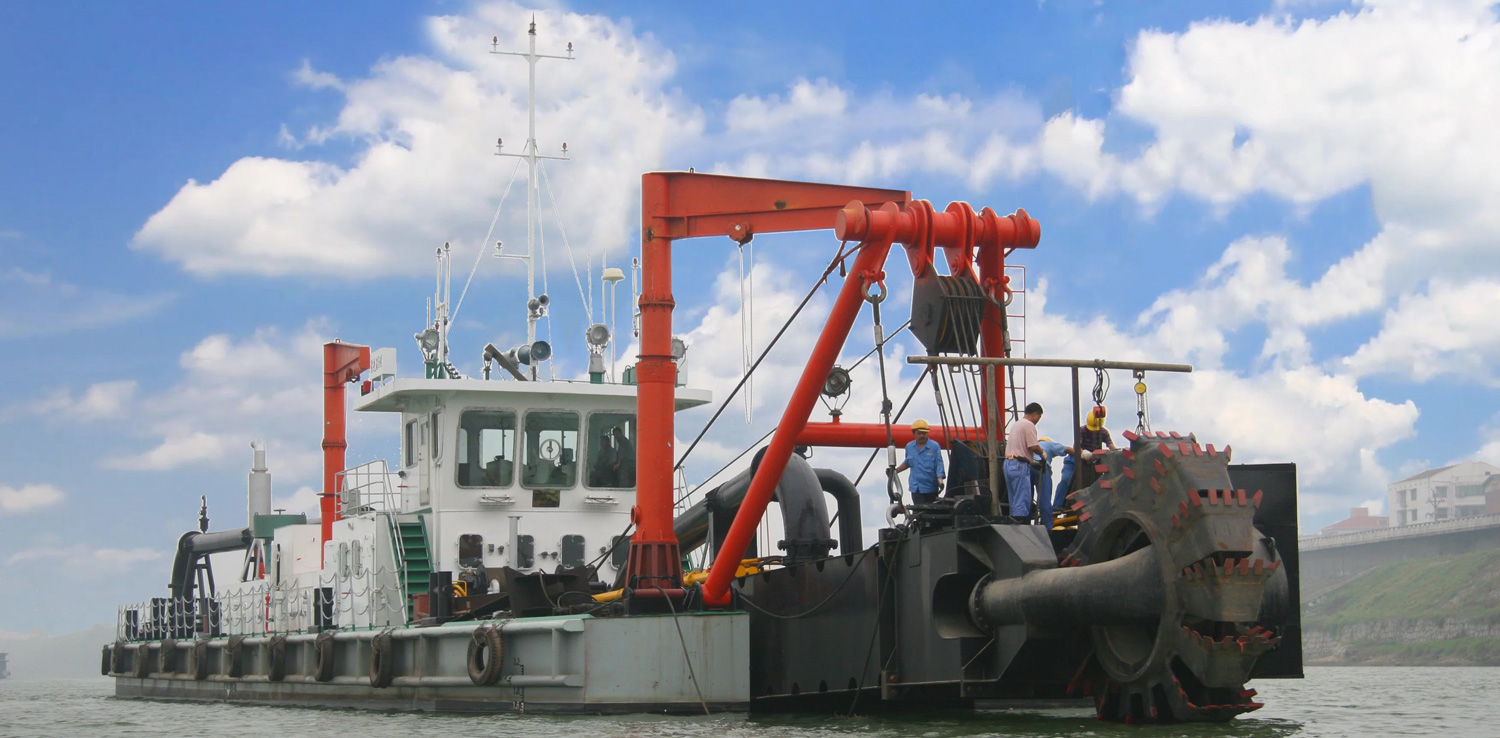Understanding Diesel-Driven Cutter Suction Dredges
Dredging plays a pivotal role in maintaining and enhancing waterway infrastructure, which is crucial for global trade, coastal protection, and environmental preservation. Historically, diesel-driven cutter suction dredges have dominated the field due to their robustness and efficiency. However, the evolving environmental regulations and a heightened sense of corporate responsibility are steering the industry towards zero-emission electric dredge systems. This transition not only underscores a commitment to environmental sustainability but also aligns with technological advancements that promise increased operational efficiencies.
Definition and Mechanism
A cutter suction dredge (CSD) is a type of dredger that uses a rotating cutter head to loosen the material in the seabed, which is then sucked up by a powerful centrifugal pump. The cutter head of a CSD is mounted at the end of a ladder, and as it spins, it carves through hard-packed soil, mud, gravel, and sometimes rock. After the material is cut, it is transformed into a slurry by mixing with water and pumped through a pipeline to its disposal location.
Applications and Advantages
Diesel-driven cutter suction dredges are extensively used for maritime projects such as harbor construction, river maintenance, and canal creation. The main advantages of diesel-driven CSDs include:
- High Mobility and Versatility: These dredges can be easily transported and assembled, allowing them to operate in remote and difficult terrains.
- Powerful Performance: Diesel engines provide significant power, enabling these dredges to handle a variety of materials from soft mud to hard rock.
- Economic Efficiency: Diesel-driven systems have historically offered a lower initial capital cost compared to other dredging technologies.
The Importance of Zero-Emission Electric Dredge Systems
Environmental Impact
The shift towards zero-emission electric dredge systems is primarily motivated by the need to reduce the environmental footprint of dredging operations. Traditional diesel engines emit significant amounts of CO2, NOx, and particulate matter, contributing to air pollution and greenhouse gas emissions. Electric dredges, on the other hand, offer a cleaner alternative by eliminating direct emissions. This is particularly crucial in sensitive environments like wetlands or near urban areas where air quality concerns are paramount.
Operational Efficiency
Electric dredges bring about enhanced operational efficiency through:
- Reduced Fuel Costs: Electric dredges can be powered by renewable energy sources or connected to the electrical grid, potentially lowering operational costs related to fuel consumption.
- Lower Maintenance Requirements: Electric motors have fewer moving parts compared to diesel engines, resulting in lower maintenance costs and downtime.
- Quieter Operations: Electric systems produce significantly less noise, which is a critical factor in urban or ecologically sensitive zones.
Industry Trends and Drivers
Regulatory Push
Increasingly stringent environmental regulations globally are compelling many operators to consider electric and other low-emission alternatives. Regulations focusing on air quality, carbon footprints, and noise pollution are particularly influential.
Technological Advancements
Advancements in electric motor efficiencies, battery storage technology, and renewable energy integration are making electric dredges not only a viable but also a preferable option in many scenarios. These technological improvements are expected to continue, further closing the gap in performance and cost-effectiveness between diesel and electric systems.
Corporate Environmental Responsibility
Beyond regulatory compliance, there is a growing trend in the dredging industry towards sustainability. Companies are recognizing the value of environmental stewardship in maintaining their social license to operate, attracting environmentally conscious investors, and engaging stakeholders who prioritize sustainability.
Conclusion
The dredging industry is at a pivotal moment, with the transition from diesel-driven cutter suction dredges to zero-emission electric dredge systems marking a significant shift towards sustainable practices. This move is driven by a combination of regulatory, technological, and societal factors that emphasize the need for environmental protection and operational efficiency. As the industry continues to evolve, it is expected that more operators will adopt electric dredging solutions, leading to cleaner, quieter, and more efficient waterway maintenance and construction activities.
This detailed exploration of diesel-driven cutter suction dredges and the shift towards zero-emission electric dredge systems reflects an industry in transformation, poised to meet the challenges of the 21st century with innovative and sustainable solutions.
